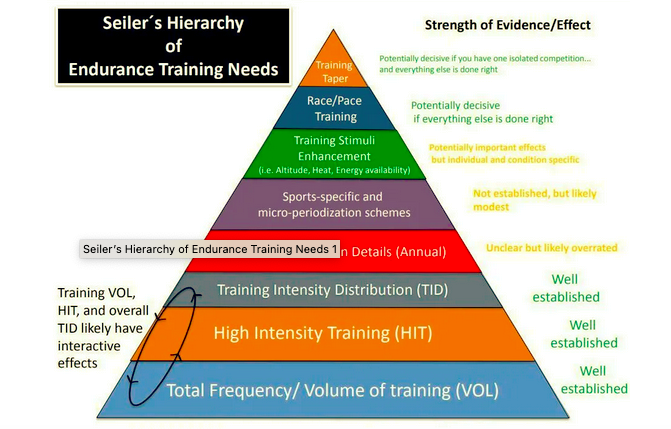
I touched on training intentions in my last post. From being goal-driven by events and races, now, I want to be consistent and be “healthy”, whilst continuing to be fitter and stronger. If I had to boil my ethos down, it would be putting in a good effort and doing myself justice in whatever comes up. That could be a sports day with my training crew, a bike ride with friends or the occasional Parkrun. Here’s how intentions can change and why you don’t have to go full beans 100% of the time.
Comparison with former self
Comparison is the thief of joy. The first point to address is comparing your current self to a former self. I posted about this a long time ago and still catch myself doing this. You may have previously been a very good sportsperson or posted a reasonable parkrun or marathon time, 5- 10 years ago. You are very likely not that person physically, mentally or living the same lifestyle.
I’m 45 and seem unable to get my weight below 90kgs (200 lbs). I’m not going to hit the times I posted 7 years ago and was 12kg (25 lbs) lighter.
Where you used to be needs to be forgotten (for today). It could be a goal to get back there in the future, but you should only be comparing yourself to where you are now. Age becomes an issue, fitness fluctuates, injuries happen and demands on your time increase.
Comparison is also demotivating, mentally tiresome and impacts you in being present and enjoying your exercise.
Comparison to others
See above. It’s a waste of time and energy. Some have genetic advantages that will make them better/faster at something. Skinny light people can have an advantage in distance running or distance cycling, particularly going up hills. Bulky people may have a greater ability to lift heavy weights and put muscle on quickly and might be genetically disposed to do so. The fitspo people on social media are a very, very small percentage of the normal population. You are not them. You are you. Take inspiration, but do not compare yourself.
Compare yourself to you. How are you progressing from last week? Have you improved? Squeezing and extra rep out or adding a couple of minutes to a run is plenty.
What is your ethos?
Ethos is your “beliefs or ideals” or your “fundamental character or spirit”. I like the word spirit. It seems to capture what exercise should be. Uplifting, strengthening and encouraging.
A professional athlete is driven to win and/or make money. A film actor is driven by a multiple million-dollar paycheck, a personal trainer, a live-in chef and that they are going to be on the big screen semi-naked.
You and I are neither of them. It takes you back to the previous point, do not compare yourself.
My ethos is to be fit and healthy. To comfortably run a quickish 5 or 10 km. Be able to lift some heavy stuff or have some muscular endurance. To maintain a reasonable weight (for me). Whilst I have a goal to “achieve” the above, it’s taken light-heartedly. I don’t beat myself up if I miss a session or cut a run short. I just endeavour to make the next session or run positive and slowly push a bit of progression.
Sleep
Commonly, for me, the reason for a missed training session is the alarm goes off and I still feel tired. In those cases, I reset the alarm and go back to sleep. More sleeping and recovery have a more positive benefit than going out and flogging myself in a session I don’t want to be at.
Sleep is now a big thing in the sports and productivity world. Long gone is the “I survive on 4 hours of sleep” mantra and is now “9 hours sleep is the reason for my success”.
Listen to your body. If you feel tired (and have the opportunity) take a nap or get an early night. The benefits of rest and recovery will have a greater impact than a poor session that also disheartens you.
Hierarchy of needs training
Commonly there is the thought that you must be doing multiple different things to progress in endurance training. Every YouTube running video I watch says the same thing – easy runs, threshold runs, tempo runs, progression runs, hill repeats, interval runs. I’m interested in running and write a blog about it, but can’t tell you (with confidence) what some of these runs are.
Stephen Seiler, a sports scientist created his hierarchy of endurance training needs, shown below.

As you can see, the Total Frequency or Volume of Training is at the bottom of the hierarchy and therefore the most beneficial thing you can do to improve your performance in endurance is to train more.
If you are getting this layer right, then you have a good base to add some high intensity training (second layer) then optimise the low intensity to 80% and the high intensity to 20% (third layer).
The point here is, don’t get bogged down doing numerous different things. If you don’t have the capacity for all the stuff, focus on frequency.
Is it still fun?
The question says it all really, or to put it another way Do you still enjoy it? I can say I look forward to training on Saturday mornings (when it’s at a more reasonable time). The thought of going running makes me feel good. Maybe this is the same as the weird psychological thing – like the thought of going on holiday is better than the actual holiday. There’s still resistance in the morning getting out the door, but a mile in, I always enjoy it.
If it is not fun, you may want to think about why and look at the points above. Do you even enjoy the activity you are doing? I sometimes wonder if I like cycling! Should you try or do something else?
If it’s not fun. Are you overtraining? Are you trying to do too many things? Is 80% of your training low-intensity? Think about your intentions.



